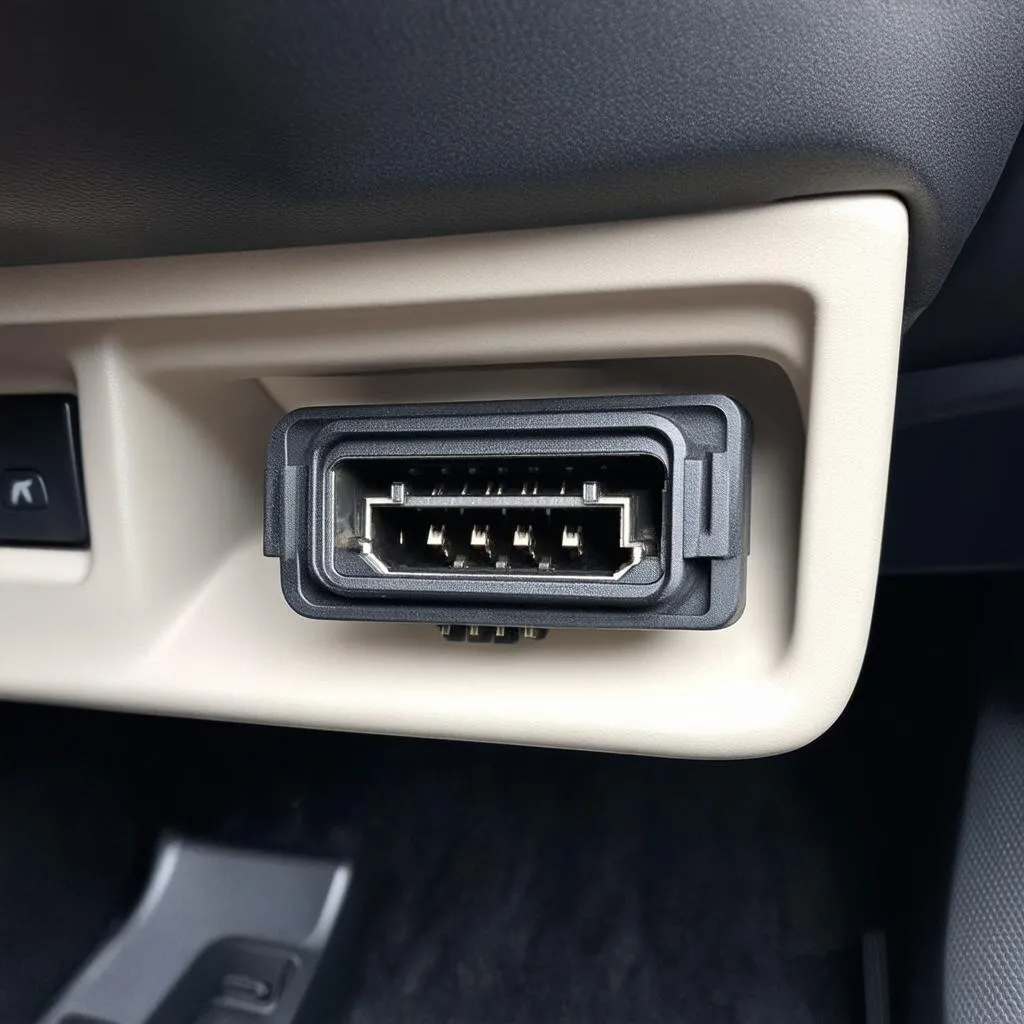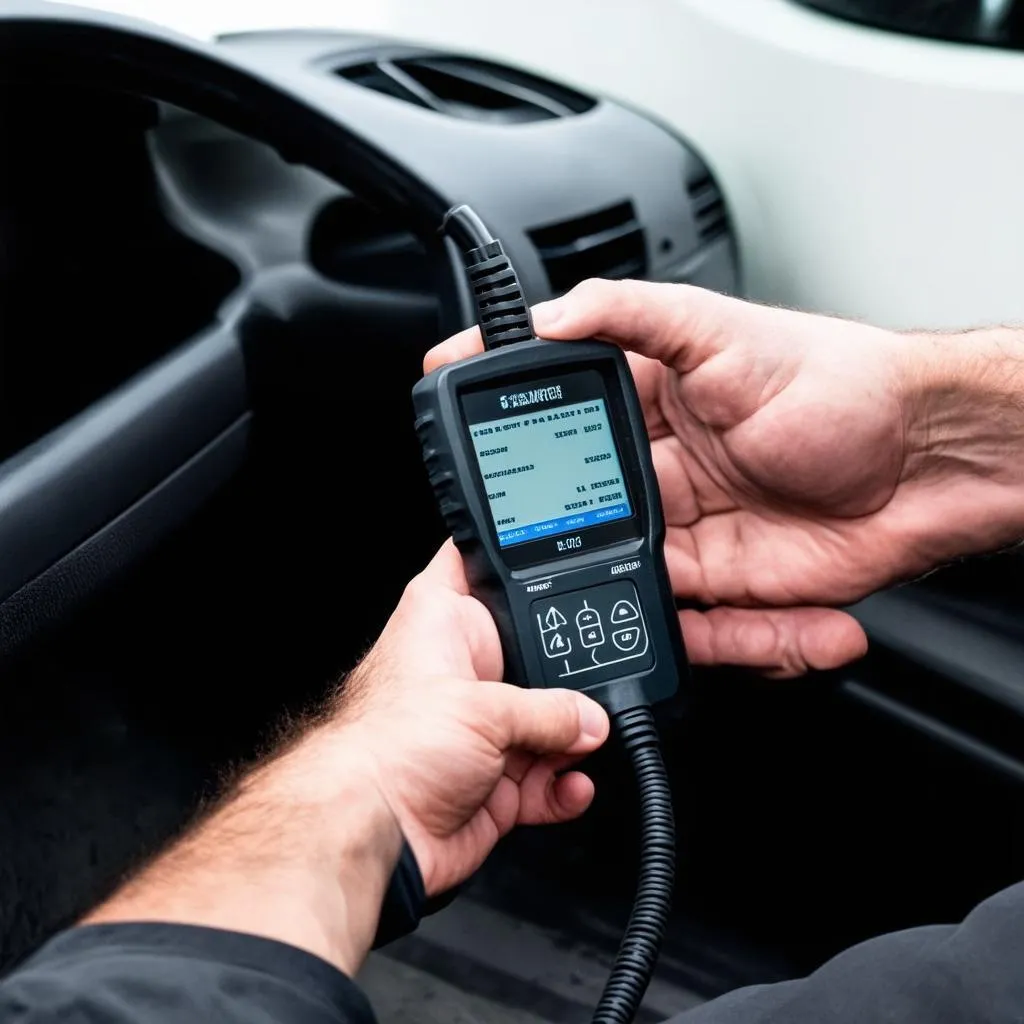They say, “Curiosity killed the cat.” But, in the world of automobiles, curiosity can be a powerful tool – especially when it comes to understanding your car’s inner workings. Have you ever wondered why your car’s OBD port is often tucked away, hidden from plain sight?
The Mystery of the OBD Port: Why Do Car Manufacturers Hide It?
You might be wondering, “Why do car manufacturers go to such lengths to hide the OBD port?” It seems like a simple connector, so why all the secrecy? Well, the answer lies in a delicate balance between functionality and security.
The OBD (On-Board Diagnostics) port serves as a crucial gateway for mechanics and technicians to diagnose and repair your car. It provides access to real-time data about your vehicle’s systems, allowing them to identify and fix problems quickly.
However, the OBD port can also be used by individuals for other purposes, such as accessing the car’s internal systems, potentially tampering with its performance, or even manipulating emissions data. This raises concerns about vehicle security and the potential for misuse.
Here’s what we know about the reasons behind hiding the OBD port:
- Security: By making the OBD port less accessible, manufacturers aim to prevent unauthorized individuals from interfering with the car’s systems.
- Tampering Prevention: Hiding the port makes it harder for individuals to tamper with the vehicle’s performance or emissions control systems.
- Protection Against Theft: While not the primary purpose, hiding the OBD port can make it harder for thieves to access the car’s systems and potentially steal it.
Common OBD Port Hiding Spots: Where To Look For That Hidden Treasure
While the specific location of the OBD port varies across car models and manufacturers, there are a few common hiding spots to keep in mind:
1. Under the Dashboard: This is arguably the most popular spot. The OBD port is often located under the dashboard, near the driver’s side knee or on the driver’s side lower dash panel.
2. Under the Steering Wheel: Another common spot is underneath the steering wheel, tucked behind a panel or a trim piece.
3. Near the Fuse Box: Sometimes the OBD port is situated near the fuse box, which is typically located under the dashboard, in the engine bay, or even in the trunk.
4. In the Engine Bay: If the OBD port is not in the cabin, it’s likely to be found in the engine bay, usually near the firewall or on the driver’s side of the engine compartment.
5. Other Unexpected Spots: Car manufacturers are known for their creative hiding spots! You might even find the OBD port near the glove compartment, under the seat, or even behind the radio.
Tips For Finding Your Car’s Hidden OBD Port
While car manufacturers enjoy playing hide-and-seek with the OBD port, there are a few things you can do to find it:
- Consult your car’s manual: The owner’s manual will usually provide a diagram showing the location of the OBD port.
- Look for a “OBD” or “DLC” label: Sometimes, the OBD port is labeled with the abbreviation “OBD” or “DLC” (Data Link Connector).
- Use a flashlight: This will help you see in dark or cluttered areas.
- Ask a mechanic or car enthusiast: If you’re still struggling, a mechanic or car enthusiast might be able to point you in the right direction.
Remember: It’s important to respect your car’s design and avoid unnecessary modifications. Always consult a qualified mechanic for any repairs or modifications to your vehicle.
How to Find a Lost OBD Port: A Story From the Garage
Imagine this: You’re working on a project with your car, and you need to access the OBD port. You know it’s there somewhere, but you just can’t seem to find it! You’ve checked all the usual spots, but it’s like the port has vanished into thin air.
This happened to a friend of mine, Mark, a tech-savvy DIY enthusiast. He was working on his car’s diagnostics and needed to access the OBD port. He searched everywhere, but it was nowhere to be found. He checked the owner’s manual, scoured online forums, and even consulted his mechanic.
Finally, after hours of searching, he found the OBD port in the most unexpected place – hidden behind a small panel in the rear passenger compartment. Mark was baffled, but relieved to have finally found it.
Moral of the story: It’s not always about the obvious spots. Sometimes, the key to finding the OBD port lies in thinking outside the box and exploring all possibilities.
Frequently Asked Questions
Q: Can I hide my OBD port to prevent theft?
A: While hiding the OBD port can make it harder for thieves to access your car’s systems, it’s not a foolproof solution. Experienced thieves often know the common hiding places, and they can use specialized tools to locate it.
Q: Is it illegal to modify my car’s OBD port?
A: The legality of modifying your car’s OBD port depends on your location and the specific modification you are considering. In some regions, it may be illegal to modify the OBD port in a way that affects the car’s emissions control system. It’s best to consult a qualified mechanic or legal professional before making any changes.
Q: What are some popular OBD tools for diagnosing my car?
A: There are many popular OBD tools available, including:
- OBD2 Scanner: This device connects to the OBD port and displays real-time data about your car’s systems.
- OBD2 Code Reader: This device reads and clears diagnostic trouble codes (DTCs) from your car’s systems.
- OBD2 Adapters: These adapters allow you to connect to the OBD port using your smartphone or computer.
Q: Why is the OBD port important for car maintenance?
A: The OBD port is essential for car maintenance because it allows mechanics and technicians to diagnose and repair problems quickly and efficiently. It provides access to real-time data about your vehicle’s systems, enabling them to identify and resolve issues effectively.
Q: Are there any OBD-related tips for getting the most out of your car’s performance?
A: Yes, by using an OBD tool, you can:
- Monitor your car’s performance: You can use an OBD tool to track your car’s fuel efficiency, engine temperature, and other vital parameters.
- Identify potential problems early: By monitoring your car’s data, you can spot potential problems before they become serious.
- Optimize your driving habits: OBD tools can help you improve your driving habits, such as accelerating smoothly and avoiding hard braking, leading to better fuel economy.
Q: What about using OBD tools for tuning or modifying my car?
A: While OBD tools can be used for tuning and modifying your car, it’s essential to understand the potential risks. If you’re not experienced, it’s best to consult a qualified mechanic or tuning expert to ensure that any modifications are safe and legal.
The Power of Understanding: Unlock Your Car’s Potential
The OBD port is a gateway to your car’s vital data and an essential tool for ensuring your car’s health and performance. By understanding its role and location, you can unlock your car’s potential and make informed decisions about its maintenance and care.
Do you have any other questions about the OBD port?
 obd port hidden
obd port hidden
 obd port location
obd port location
 obd scanner tool
obd scanner tool
We are here to help! If you have any questions about the OBD port or need help with your car’s diagnostics, please reach out to us via Whatsapp: +84767531508. We have experienced technicians available 24/7 to provide you with the assistance you need.
We hope this guide has been helpful in shedding light on the fascinating world of the OBD port! Let us know your thoughts and experiences in the comments below.